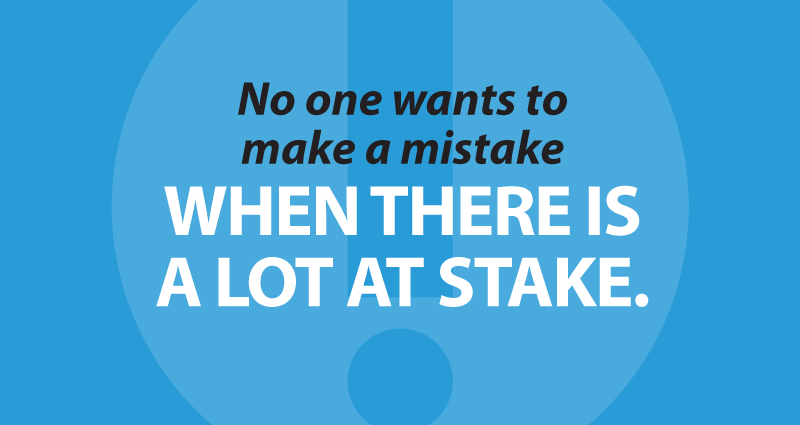
How credit unions can avoid Analysis Paralysis
Have you ever been part of a group that has come up with so many options that the only decision has been to not make a decision? Or where someone is so convinced that there is a perfect solution still out there, that the fear of making the wrong decision has everyone overanalyzing and overthinking every idea, effectively stopping all forward motion?
Then you may have encountered Analysis Paralysis (AP), described as “when the fear of either making an error, or foregoing a superior solution, outweighs the realistic expectation or potential value of success in a decision made in a timely manner.” (Or, for those of you that have been binge-watching Netflix’s “The Good Place”, just think about Chidi’s character. That’s AP.)
While some psychologists consider AP to be a sign of today’s times, back in Ancient Greece Aesop wrote about a fox’s confusion in trying to decide between escape routes, and Shakespeare wrote his longest play about Hamlet‘s flaw of thinking too much. So these internal logjams have been around a long time.
No one wants to make a mistake when there is a lot at stake.
For credit unions, Analysis Paralysis tends to occur whenever something big is under discussion, and the easiest way to avoid a mistake is to avoid making a decision.
Meanwhile, core systems get more cumbersome to maintain, and website RFPs drag on until every vendor imaginable has spent several hours trying to second-guess what the website committee has in mind. Membership campaigns get bogged down trying to target every demographic imaginable, and to actually get everyone to agree on a new brand name since it’s now been over 25 years since the principle SEG closed? Fuggedaboutit.
So how do you avoid Analysis Paralysis?
In this era of limitless options, what can be done to actually get things done? Here are a few steps you can take to break out of that loop:
1. Define one main objective.
It’s too easy to get distracted, so having a single goal will help everyone simplify their process and speed up progress.
2. Set a “drop-dead” deadline.
Nobody makes decisions in a vacuum, especially since those decisions can affect other parts of your organization. Determine the last/best possible time for a decision to be made, and make sure everyone knows it.
3. Curb your curiosity.
Deep dives into details can provide either mind-blowing insights or unlimited wastes of time. Limit yourself to what you need to know NOW vs. what you’d like to know in the FUTURE. If NOW answers the question, keep moving forward.
4. Continually narrow your options.
Start with as many options as you can to increase the likelihood of a good solution. Randomly compare three options, keeping the best two and discarding the third. Select a new third option and repeat, until you are left with your two best options.
5. Get a sanity check.
Reduce groupthink by talking to an outside expert or someone else that isn’t on your main team. By adding that diversity of thought, you gain context.
6. Build on your best option.
No matter how much information you have, there will always be more out there. But now you have your two best options, and all you really have to do is pick one. Make your decision, and build on it.
- It’s hard not to get caught up in a buzz that surrounds you. - April 9, 2024
- Turn your staff into an Idea Factory. - February 27, 2024
- Move with the future or get left behind - February 6, 2024
